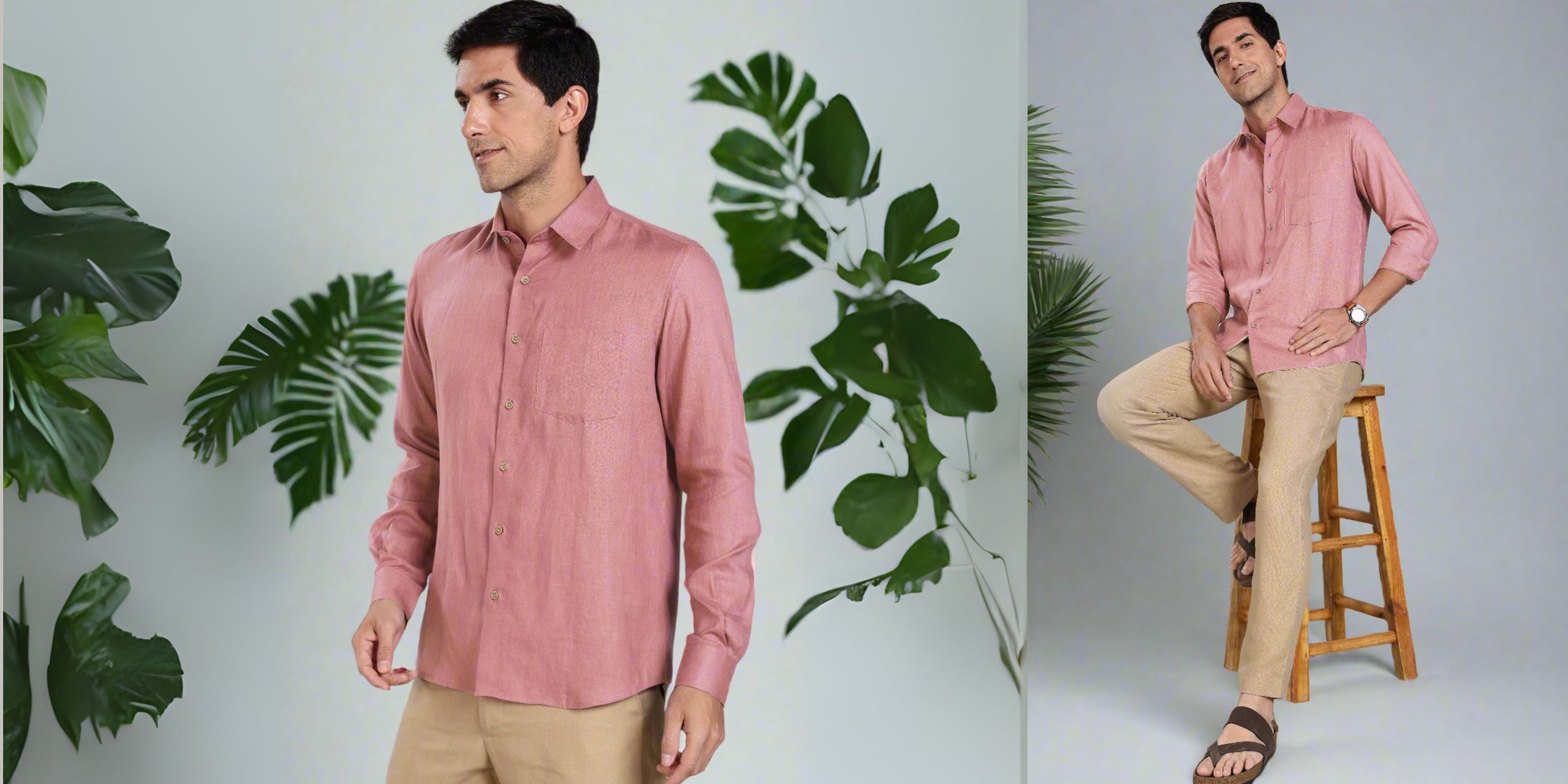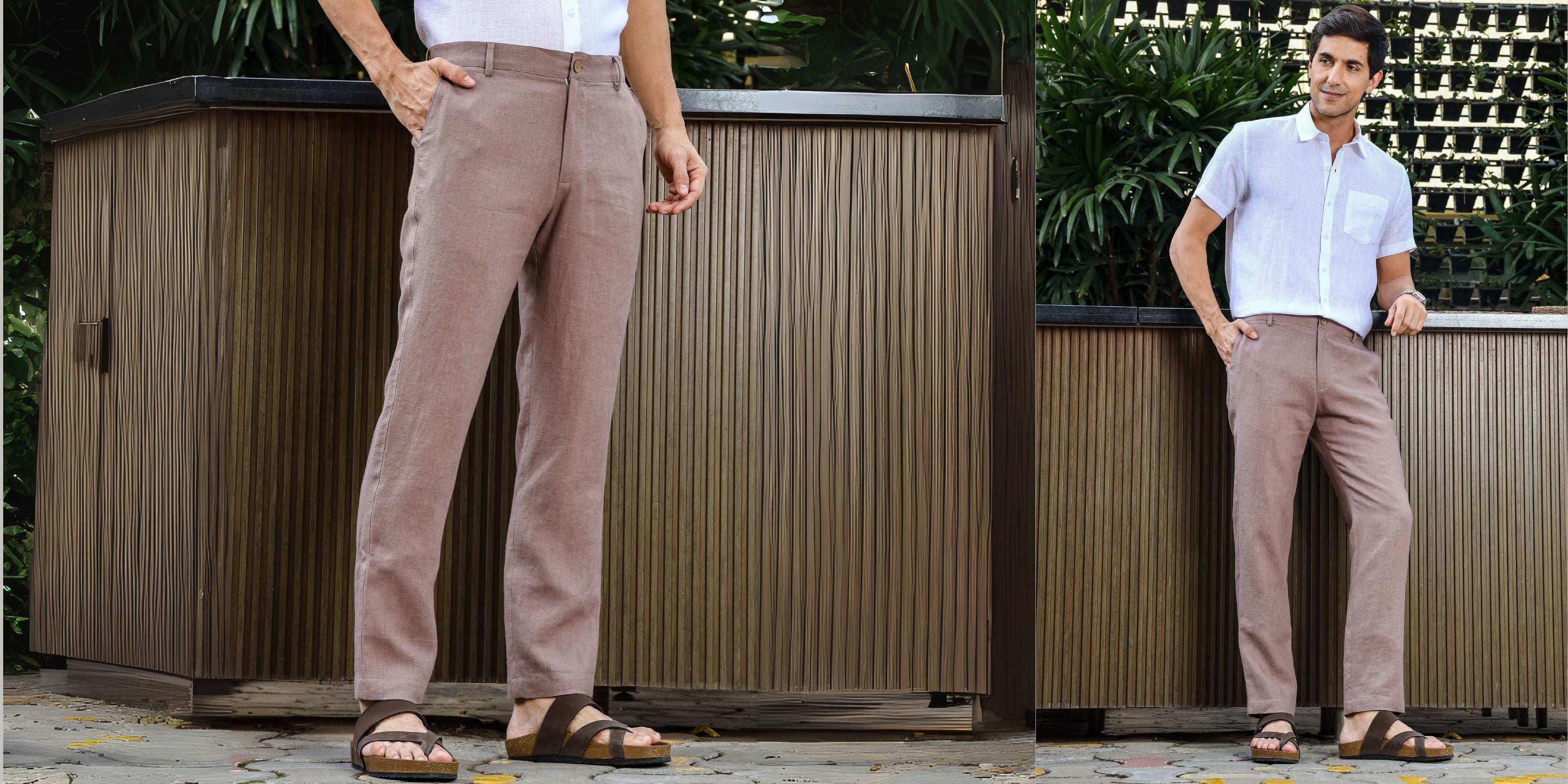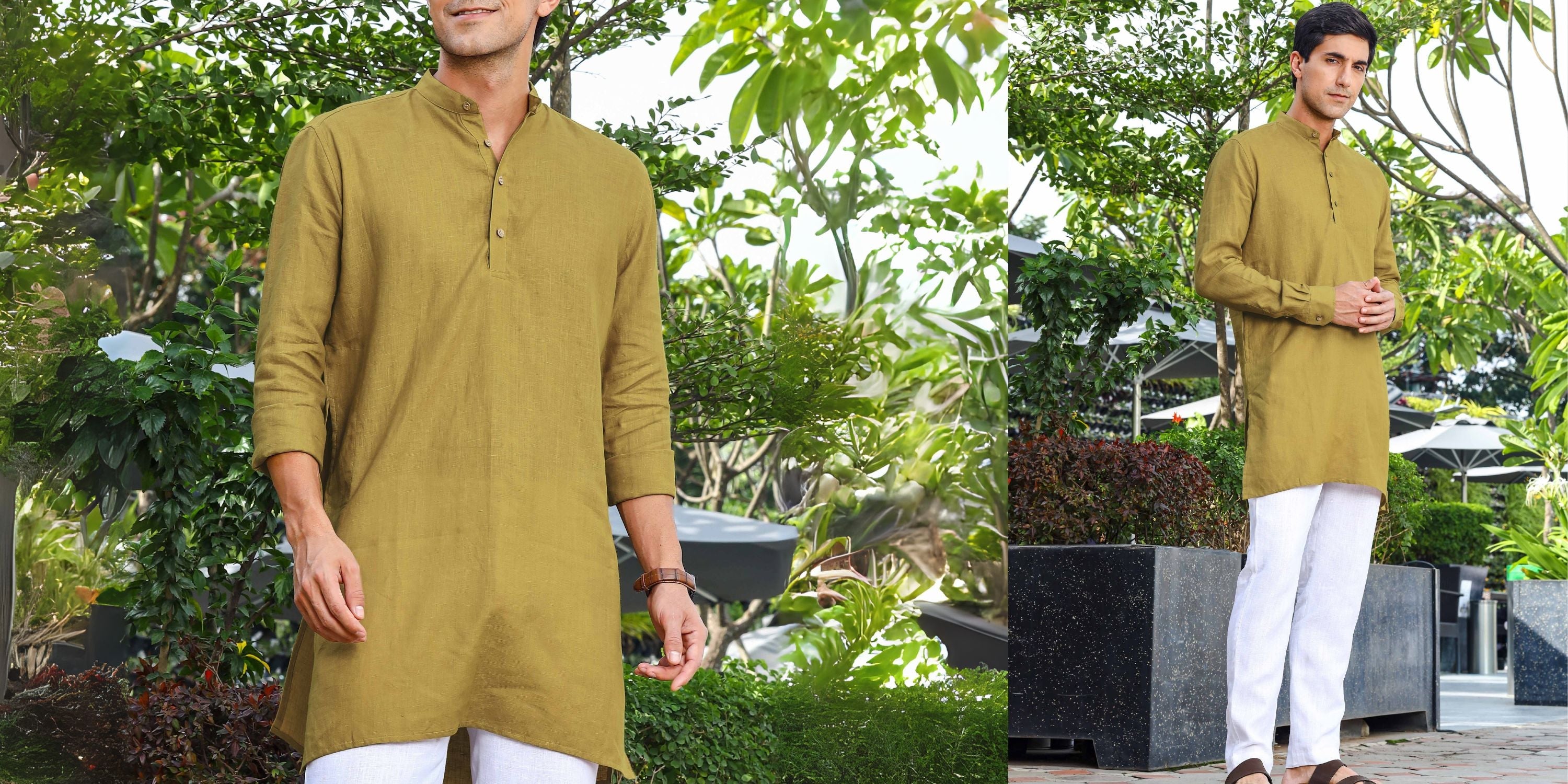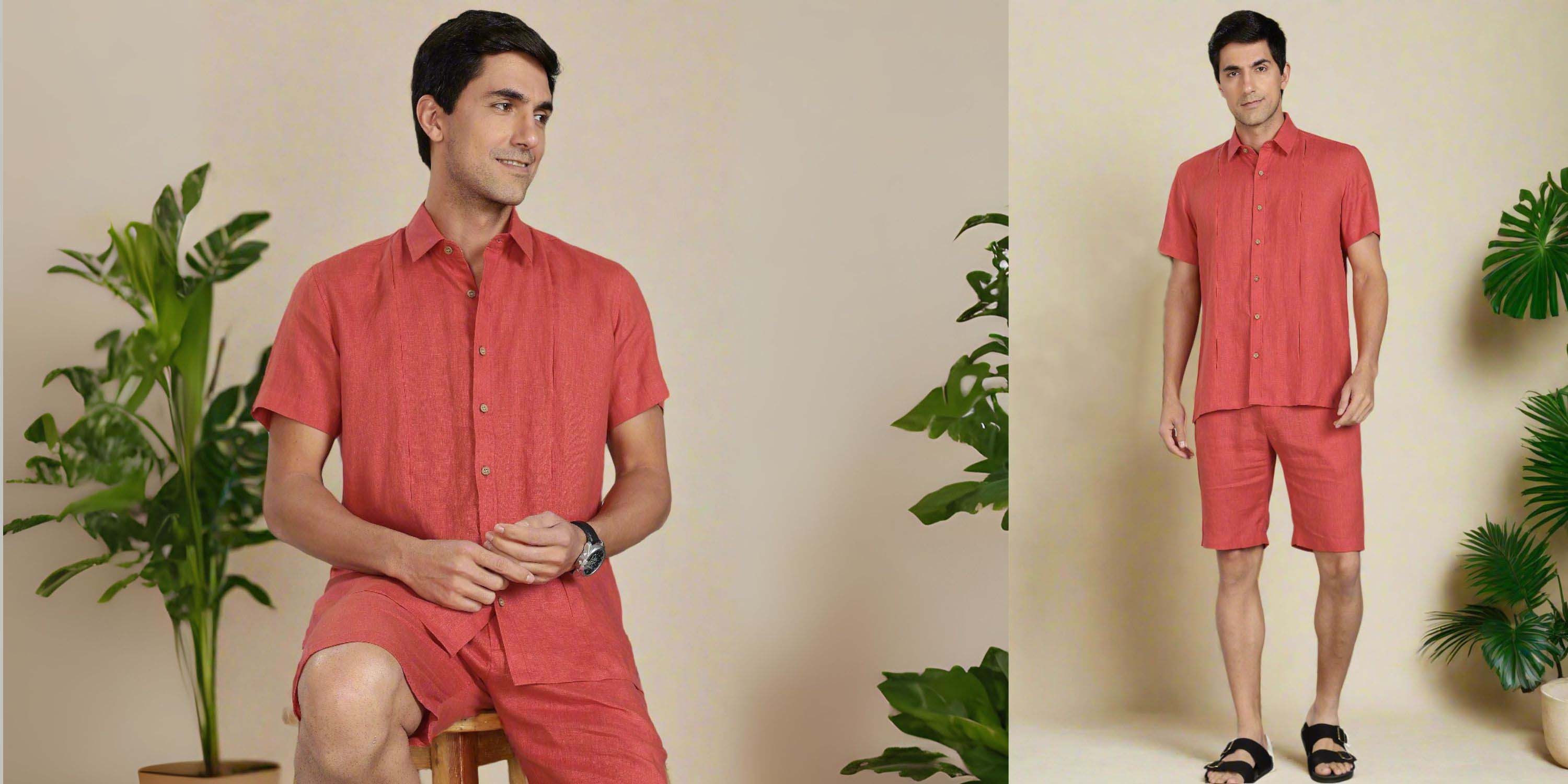What Is Lea In Linen And Why is it Important

If you’re new to linen or have ever shopped for linen clothing, you may have come across numbers like 40 Lea, 60 Lea, or even 150 Lea. These numbers may seem technical, but they are actually a key indicator of the fabric's quality, thickness, and overall feel. They reflect the Lea count, a fundamental unit used in measuring the fineness of linen yarn. Understanding what Lea means can help you make better buying decisions, especially when choosing linen garments for different uses and weather conditions.
In this guide, we’ll explore what Lea is, how it is calculated, why it matters when choosing linen, and how different Lea counts correspond to different garments. Whether you’re shopping for breathable summer shirts, comfortable trousers, or elegant kurtas, this guide will help you decode the numbers and choose the perfect linen.
What Is Lea in Linen?
The word “Lea” originates from old French and was traditionally used to refer to a unit of length. In textile terms, it’s a unit that measures the linear density of yarn—specifically linen yarn. Linear density tells us how fine or coarse a yarn is based on its length and weight.
In practical terms, the Lea count refers to how many yards of yarn are present in one pound of weight. To make this measurement simpler and more standardized, a single Lea is defined as 300 yards of yarn per pound. So if a yarn is labeled as 40 Lea, that means it contains 40 times 300 yards—that’s 12,000 yards of yarn per pound.
The higher the Lea number, the finer and thinner the yarn. The lower the number, the thicker and denser the yarn. For example:
- A yarn with a 25 Lea count will be relatively thick and heavy, providing more structure and opacity.
- A yarn with a 100 Lea count will be extremely fine, lightweight, and more delicate, resulting in a more premium and airy fabric.
This is why the Lea count is so important: it’s a direct indicator of the texture, weight, transparency, and luxury level of the linen fabric you’re buying.
Why Does Lea Count Matter?
Lea count plays a critical role in determining the quality, usability, and suitability of linen fabric for different garments. While other factors like weave, dye, and garment construction matter too, the Lea count is the foundation for how the fabric behaves.
The Lea count affects several fabric properties:
- Texture: Higher Lea counts produce smoother, softer textures that feel luxurious on the skin. Lower Lea counts have a more tactile, textured finish.
- Transparency: The higher the Lea count, the more likely the fabric will be semi-sheer, especially in light colors. Lower Lea counts offer better coverage.
- Weight: High-Lea fabrics are lighter and more breathable, while low-Lea fabrics are denser and more insulating.
- Drape: Finer yarns (higher Lea) allow the fabric to drape more fluidly, ideal for garments that need movement and elegance.
- Durability: Lower Lea counts are more rugged and durable, making them better suited for trousers, jackets, and other structured garments.
By understanding Lea count, you gain the ability to choose linen clothing that best fits your needs, whether you prioritize softness, breathability, structure, or modesty. It also allows you to appreciate the value and craftsmanship behind the garments, especially those made from high-Lea European linen.
How Lea Count Applies to Different Linen Garments
At Linen Trail, every garment is crafted with a carefully chosen Lea count to ensure it serves its purpose perfectly. Here's how the Lea count affects each type of garment in the collection:
Linen Shirts (40 to 80 Lea)
Shirts made from linen need to strike a balance between structure and softness. A Lea count between 40 and 80 is ideal for this. A 40 Lea shirt offers a bit more thickness and opacity, making it suitable for formal or workwear settings. It gives the shirt a slightly crisp appearance while still retaining breathability.
On the other hand, a 60 or 80 Lea linen shirt will feel noticeably lighter and softer, making it perfect for summer days or more casual occasions. The higher the count, the more fluid and luxurious the shirt feels. Some ultra-premium linen shirts are made with Lea counts above 100, giving them a silky, feather-light finish that drapes beautifully.
The choice of Lea count for a shirt depends on the look and feel you want. Formal shirts often benefit from a slightly lower Lea for structure, while weekend or vacation shirts work better with higher Lea counts for that breezy, effortless vibe.
Linen Kurtas (Typically 44 Lea)
Kurtas require a linen fabric that is breathable yet not overly transparent, especially if worn without layers. That’s why most Linen Trail kurtas are crafted using 44 Lea yarn—a count that offers excellent comfort, durability, and modesty. This count is fine enough to offer softness and flow, but thick enough to avoid being see-through, even in lighter colors.
Another benefit of the 44 Lea count is that it allows for detailed tailoring, embroidery, and dyeing while maintaining the natural texture of linen. Linen Trail’s kurtas also come pre-shrunk, so you don’t need to worry about unexpected shrinkage after the first wash.
This makes 44 Lea ideal for daily wear, festive gatherings, or even casual office days. You get the breathability of pure linen without sacrificing coverage or longevity.
Linen Trousers and Joggers (25 Lea)
Trousers and joggers have different functional needs than shirts or kurtas. They require a fabric that is thicker, more structured, and opaque. That’s why Linen Trail uses 25 Lea yarn for its trousers and joggers.
The 25 Lea count results in a stronger, denser fabric that holds its shape throughout the day. This is essential for lower-body garments, which undergo more wear and movement. Despite being thick, linen made from 25 Lea yarn is still naturally breathable, moisture-wicking, and comfortable for all-day wear.
These garments are particularly well-suited for hot weather, travel, or lounging. They’re tough enough to withstand frequent washing and light enough to keep you cool and fresh, even in humid climates.
Linen Shorts and Travel Pants (25 Lea)
Shorts and travel pants need to be comfortable, practical, and modest. The 25 Lea count ensures that these garments offer complete coverage without feeling bulky. This is particularly important when you're moving around, sitting, or traveling, where thin or sheer fabrics can feel inappropriate or fragile.
Using 25 Lea yarn gives the fabric just enough thickness to be reliable in various settings while still being far more breathable and lightweight than other fabrics like cotton twill or denim. For those who want effortless summer wear or practical travel clothing, this count is the perfect choice.
Linen Jackets (25 Lea)
Linen Trail’s linen jackets are also made using 25 Lea fabric, which might surprise some customers who assume jackets need very thick material. The goal here is to create a lightweight, versatile outer layer that adds structure without overheating the wearer.
A jacket made from 25 Lea linen provides a clean, tailored silhouette while still offering enough breathability to be worn during spring, early summer, or autumn. These jackets are great for travel, layering over shirts, or wearing in air-conditioned environments where a little extra coverage is needed.
This Lea count ensures the jacket is durable, doesn’t wrinkle excessively, and remains soft enough to be worn comfortably for long hours
Linen Fabric Gift Boxes (80 to 150 Lea)
Linen Trail also offers gift boxes that contain two meters of pure linen fabric in a range of higher Lea counts—from 80 to 150. These fabrics are incredibly fine and elegant, perfect for custom tailoring premium garments like dress shirts, kurtas, scarves, or even handkerchiefs.
- An 80 Lea fabric offers a balance between softness and practicality, great for everyday wear.
- A 100 Lea fabric feels light and fluid, making it ideal for luxury shirts or layering pieces.
- 125 and 150 Lea fabrics are among the finest linens available. These are soft, airy, and almost translucent—ideal for high-end tailoring or gifting.
These fabric boxes are a thoughtful gift for occasions like birthdays, weddings, or festivals and offer creative freedom for those who want to craft their own clothing.
Check out Our Collections
White Linen Shirt | Black Linen Shirt | Blue Linen Shirt | Pink Linen Shirt | Sky Blue Linen Shirt | Beige Linen Shirt | Light Blue Linen Shirt | Linen Navy Blue Shirt | Linen Shirt Green | Mens Long Sleeve Linen Shirts | Yellow Linen Shirt | Red Linen Shirt | Half Sleeve Shirt | Linen Nehru Jacket | Linen Kurta Pajama with Jacket | Pure Linen Pants for Men
Frequently Asked Questions
Q1. What is Lea in linen?
Ans: Lea is a unit used to measure the fineness or thickness of linen yarn. It indicates how many 300-yard lengths of yarn are in one pound of weight.
Q2. What does a higher Lea count mean?
Ans: A higher Lea count means the yarn is finer, resulting in a lighter, softer, and more breathable fabric.
Q3. Is 60 Lea linen better than 40 Lea?
Ans: Yes, 60 Lea linen is finer and lighter than 40 Lea, which means it will feel softer and be more breathable. However, 40 Lea is thicker and offers more coverage.
Q4. What is the best Lea count for linen shirts?
Ans: For casual shirts, 60 to 80 Lea offers softness and comfort. For formal shirts, 40 to 60 Lea provides a better structure.
Q5. What Lea count is used in linen trousers?
Ans: Linen trousers typically use 25 Lea fabric for better thickness, opacity, and durability.
Q6. Are high Lea fabrics more transparent?
Ans: Yes, higher Lea fabrics are finer and can be more transparent, especially in lighter colors.
Q7. Can I wear high-Lea linen in hot climates?
Ans: Absolutely. High-Lea fabrics like 80 or 100 Lea are lightweight and breathable, making them perfect for warm weather.
Q8. What is the finest Lea count available in linen?
Ans: Some of the finest linen fabrics come in 125 to 150 Lea counts. These are soft, luxurious, and suitable for premium garments.
Q9. Does Lea count affect price?
Ans: Yes, higher Lea fabrics are more refined and harder to produce, making them more expensive.
Q10. Can I wash high-Lea linen at home?
Ans: Yes, but it’s best to use a gentle cycle and mild detergent, and air dry to maintain the fabric’s quality.






